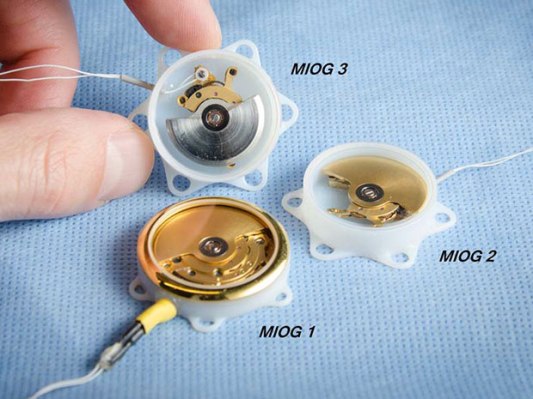Swiss researchers have given a literal twist to the proverbial ticker, designing a clock-like device that could help power pacemakers by harvesting energy from the heart itself — just like an automatic watch harvests movement from the motion of the wrist.
Pacemakers and other implanted devices require a source of power, and providing that power is usually a battery; but batteries run out and need to be replaced — not a simple task when it’s an inch or two beneath your skin.
Andreas Haeberlin, from the University of Bern, and Adrian Zurbuchen, from the University of Michigan, have proposed an alternative that relies on actual clockwork — as in, salvaged from a (naturally, Swiss-made) wristwatch.
“The continuous and powerful contractions of a human heart ideally qualify as a battery substitute,” they write in the abstract of their paper, published in IEEE Transactions on Biomedical Circuits and Systems. For although a pacemaker helps keep the heart beating in time, the body itself provides abundant energy to move the actual cardiac muscles.
How to capture and store that kinetic energy, though? If only the researchers were from a country that for centuries has famously built and refined mechanisms that do exactly that. Realizing that this was in fact the case, they took apart a Swatch wristwatch and began repurposing it for internal use.
Ordinarily the watch would be on a wrist, and as that wrist moved, a weight inside would swing back and forth, its motion stored in a spring. Put near the heart, the weight would instead be moved by the heartbeat itself, and modifications were made to the mechanism to accommodate this. Initial tests in pigs found that the setup yielded about 6 microwatts, which is enough to power a pacemaker.
A small backup battery would likely be necessary in case both tickers wind down at the same time — but it too could be kept charged by the motion of the heart during periods of healthy cardiac action.
More studies are being put in place for the next few years to further test the device, which might make replacement pacemaker batteries a thing of the past.
